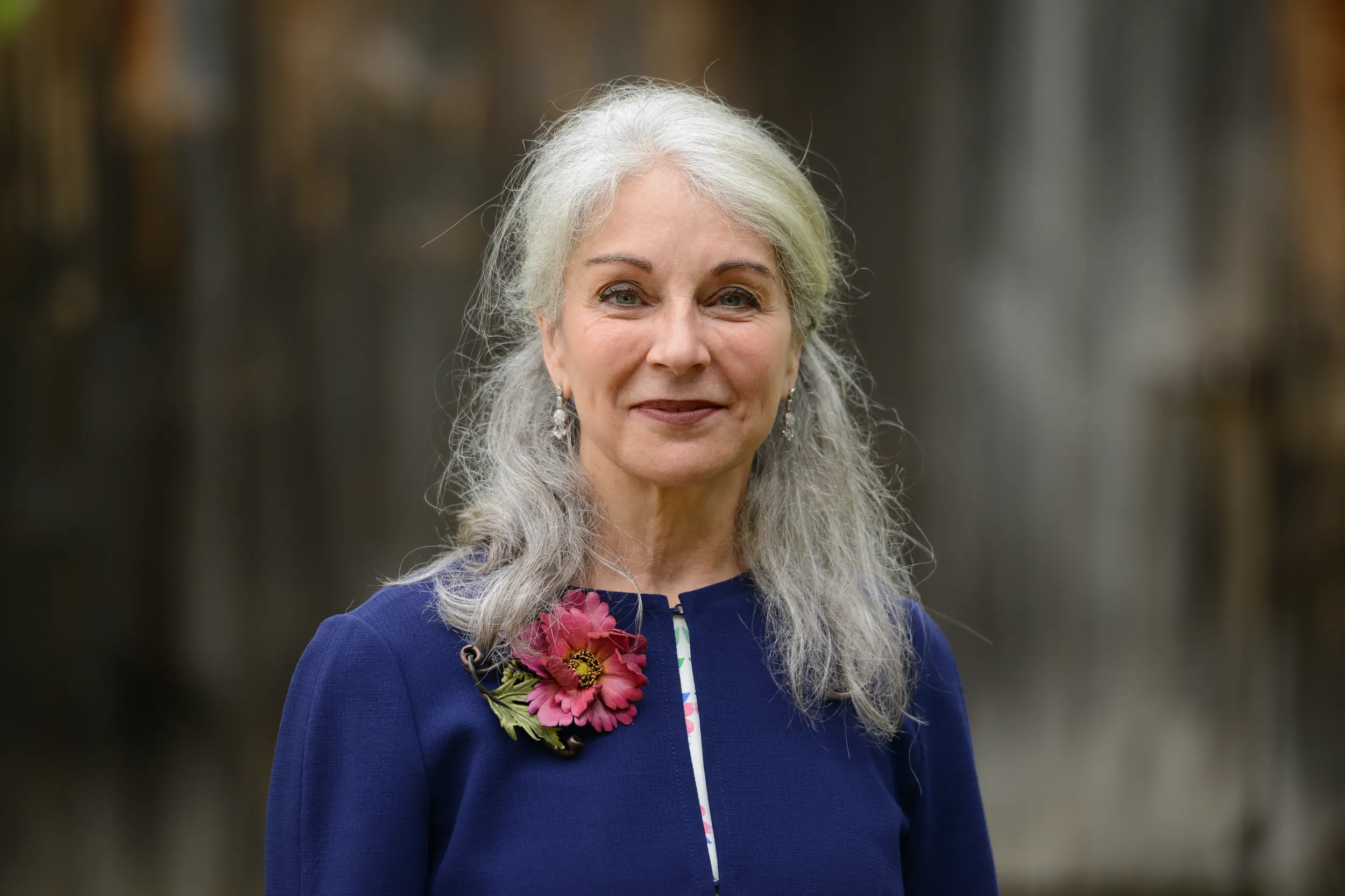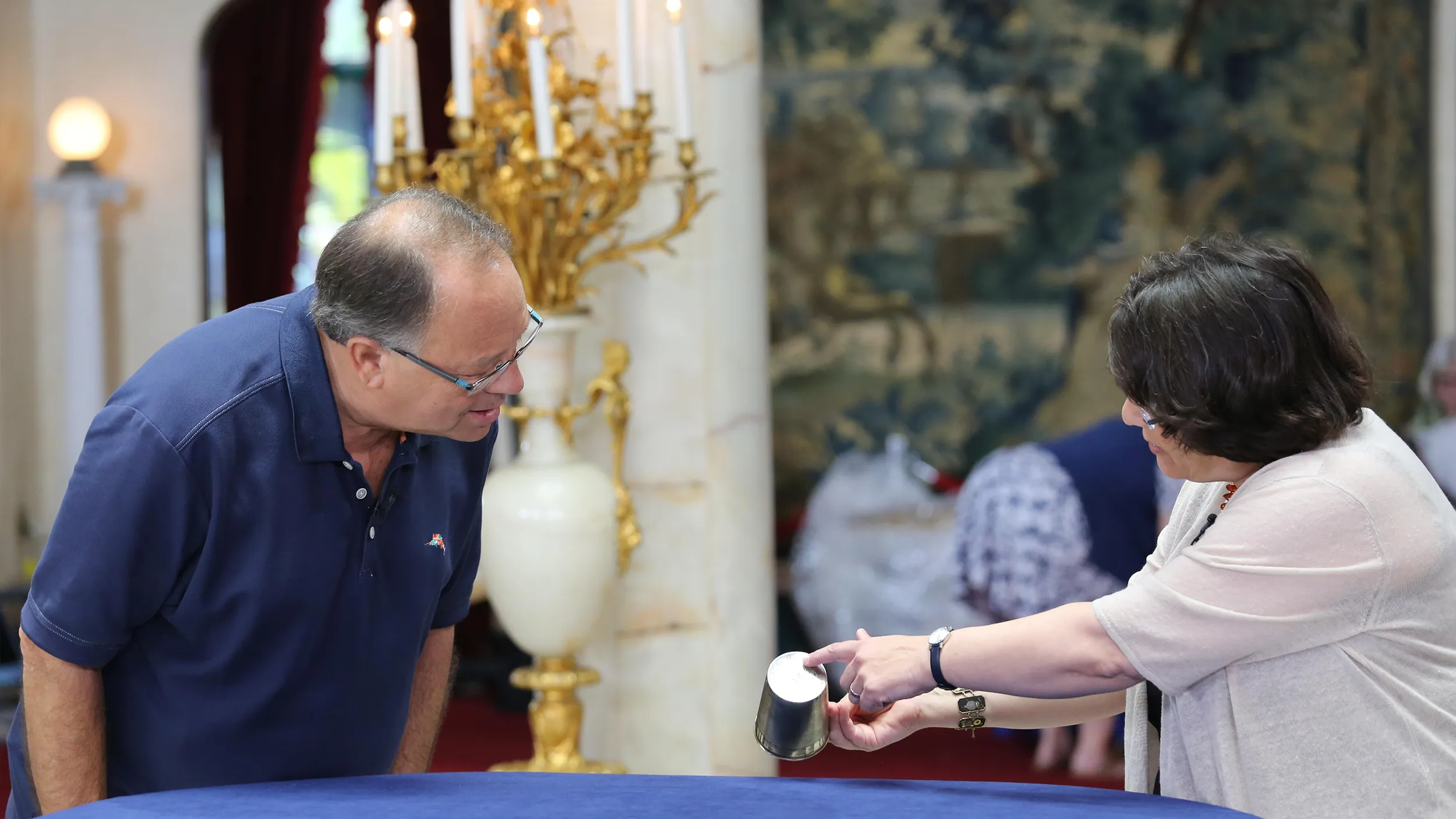GUEST: Most of those came from, like, garage sales or estate sales, thrift shops. And I thought, "I might have some amber in here." But I wasn't sure, because I couldn't tell if it was plastic or not. The first piece and the last piece I bought, I remember, from a lady who was, like, 91. And she and her husband retired, and they used to travel to Arizona, Canada. She'd collect turquoise. She told me they were amber, but she wasn't sure.
APPRAISER: You've got a very cool collection.
GUEST: Oh, wow.
APPRAISER: And it's a mixed group. If we take a look at the first piece, the cabochon has sort of a swirly nature in it.
GUEST: Yes.
APPRAISER: Amber inclusions don't occur in a swirly nature.
GUEST: Oh.
APPRAISER: Things that are that are made by man do, like glass and plastic. That is a plastic necklace.
GUEST: Wow.
APPRAISER: Amber doesn't tend to be as heavy as some of the synthetics.
GUEST: Oh, okay.
APPRAISER: You won't see a mold line around... amber.
GUEST: Okay.
APPRAISER: There's variety of tone.
GUEST: Okay.
APPRAISER: Variety of inclusions. And then the last undeniable test for it is the smell the material produces when it's melted. So a hot pin inserted in an obscure place into the material...
GUEST: Okay.
APPRAISER: In amber, will give you a smell of resin, sort of piney. The first necklace is a piece of American costume jewelry, dating from 1960s, 1970s. The next piece here has oblate beads. And when we look at the beads, you can see that they're not exactly evenly football-shaped. Some are more round than others, some are longer than others.
GUEST: Right.
APPRAISER: So that's a sign of age; also the amount of dryness and the variety of tone. So those beads might be Chinese, or they might be Baltic amber. The amber may date from 1900 through around 1920. If it's older, it's been shortened from an earlier length.
GUEST: Okay.
APPRAISER: But it's clearly been restrung in the second half of the 20th century, with that gold finding.
GUEST: Okay, okay.
APPRAISER: The piece that interests me most is this very last one, and that it refers to a Southwest collection really places it in a little bit of context, and it makes it a cross-collectible.
GUEST: Oh.
APPRAISER: Because what I'm seeing here is an amber necklace, probably Baltic amber in origin...
GUEST: Okay.
APPRAISER: ...that's carved in the form of Native American jewelry, because the barrel-shaped pieces of amber that form the chain look like heishi beads.
GUEST: Okay.
APPRAISER: And then the pendant looks like the pendant from a Southwestern necklace.
GUEST: Yeah.
APPRAISER: Carved with the head of a Native American Indian chief, with coral earrings and a turquoise drop at his neck.
GUEST: Oh, those are stones.
APPRAISER: So the wire around it, and the little bell at the top, is silver, is fine sterling work. We're getting back to how you can see inclusions in amber.
GUEST: Yeah.
APPRAISER: If I flip this over, you can see there are very random inclusions. Sometimes you can find a bug in there.
GUEST: Yeah.
APPRAISER: But this is actually natural amber, with natural amber-type inclusions.
GUEST: Whoa.
APPRAISER: It's Baltic amber, strung and created in the 1960s. As to the makers, we really can't tell-- none of them are signed.
GUEST: Okay.
APPRAISER: May I ask how much you've spent on any of these pieces?
GUEST: Probably the most, anywhere from ten to $20 or $30. Maybe the middle one I might have spent $30 for.
APPRAISER: The first one, the black necklace, may be worth about ten dollars.
GUEST: Ten dollars, okay.
APPRAISER: The one that you spent $30 on, because of its age, because of its color, I would give it an auction estimate of $800 to $1,000.
GUEST: Oh, my gosh, wow.
APPRAISER: The last one here is something that I haven't seen. The amber isn't as antique as the amber in the center, but it is a cross-collectible, and I wouldn't be uncomfortable giving it an auction estimate of $1,000 to $1,500.
GUEST: Oh, my gosh. (laughs) Wow. Wow, I'm really surprised.









